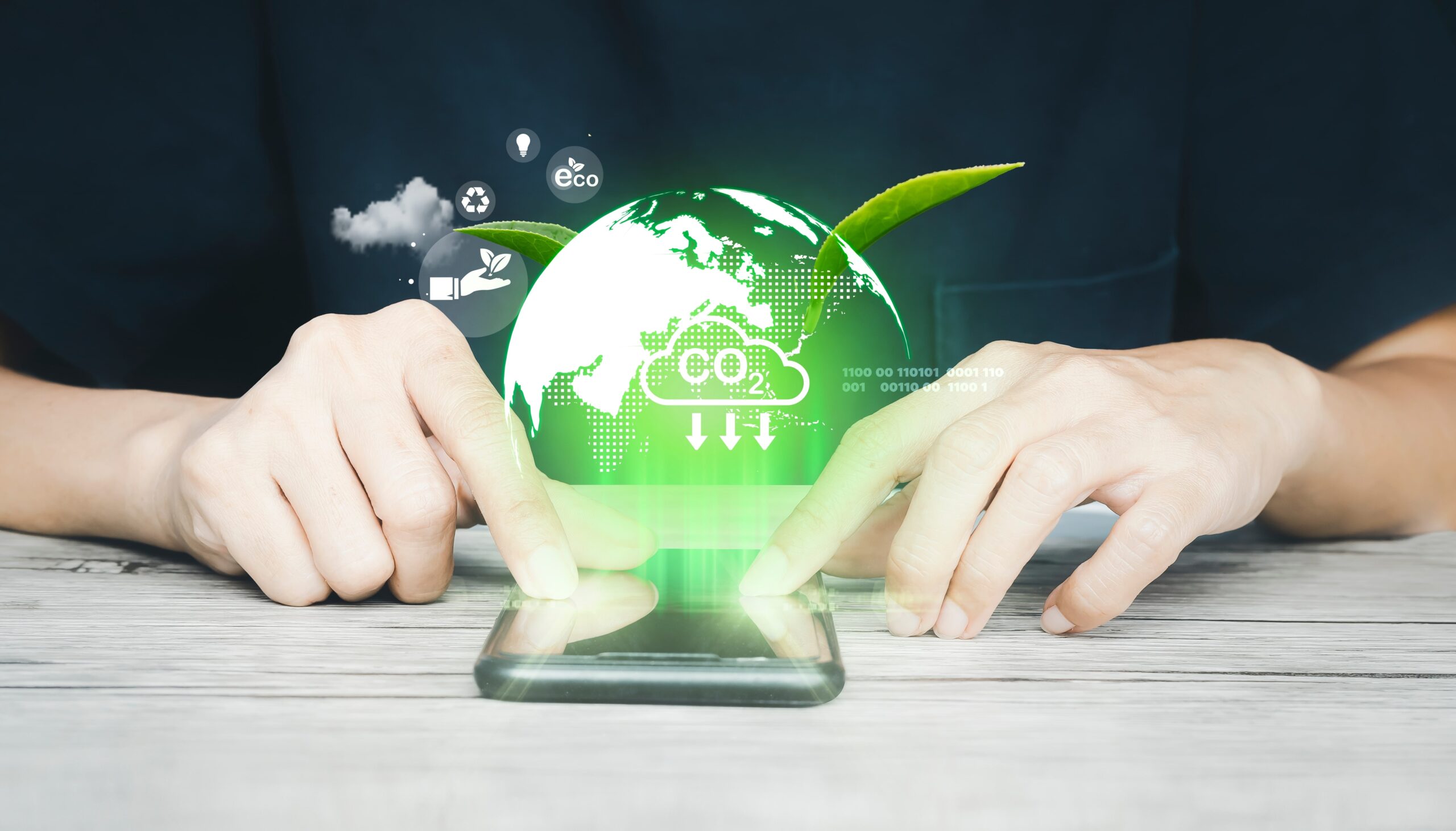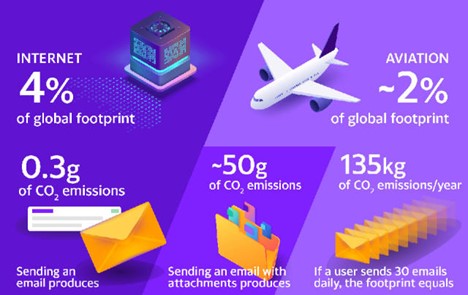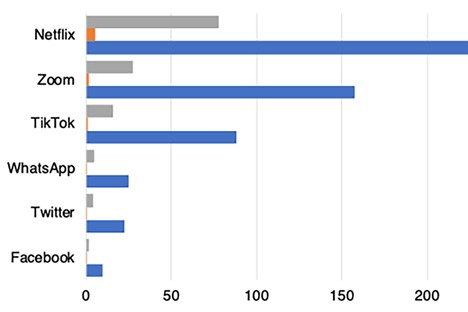
Written by Dipak
Jun 29, 2023 | 5 Min Read
 The Internet has been a transformative force that has reshaped and revolutionized our contemporary society. Today, it offers the remarkable ability to access virtually any piece of information, connect with individuals across the globe, and carry out daily work seamlessly, all without the need to step outside your own room. This digital evolution has brought about incredible convenience and connectivity.
The Internet has been a transformative force that has reshaped and revolutionized our contemporary society. Today, it offers the remarkable ability to access virtually any piece of information, connect with individuals across the globe, and carry out daily work seamlessly, all without the need to step outside your own room. This digital evolution has brought about incredible convenience and connectivity.
As we use digital tools for everything from staying connected to shopping and having fun, we’re ignorantly leaving a mark on the environment through the web’s complex network. In this article we will look into the world of the internet carbon footprint, breaking down what it really means and how it affects our planet’s sustainability.
Evolution of Digital Technology
Since the outbreak of the COVID-19 pandemic and the resulting lockdown measures, our reliance on digital devices has surged dramatically. The year 2021 witnessed a remarkable uptick in digital and internet usage, reaching unprecedented levels. Notably, 2021 marked one of the highest points in terms of our engagement with digital technologies and the internet. To provide some perspective, the World Global Index reveals that the “average” global internet user now spends nearly 7 hours each day engaged with the internet across various devices.
As of 2022, approximately 5 billion individuals around the world, accounting for 63% of the global population, are active users of the World Wide Web. This massive user base contributes to the generation of significant amounts of electronic waste and CO2 emissions. It’s worth highlighting that every instance of internet usage, whether through social media, online platforms, or any digital medium, contributes to the emission of a carbon footprint into the atmosphere.
Explanation of the Concept of the Internet Carbon Footprint
A Carbon Footprint serves as a quantifiable measure that illustrates the volume of greenhouse gas emissions produced over the lifecycle of a product, service, organization, event, or even an individual. This metric is commonly expressed in tons of CO2 equivalent.
Similar to all digital entities, the Internet too has its own Carbon Footprint, especially since it relies heavily on substantial energy resources to function and remain operational. Vast databases and servers situated within data centers are essentially the backbone of the Internet, and are responsible for managing and upholding the information directly accessible on the global web. Essentially, this encompasses every action and content displayed on your digital device’s screen. Each interaction, upload, or creation of data contributes to the vast storage maintained by these data centers, comprising thousands of computers and servers. Remarkably, if the IT sector were a country, its energy demand would rank third globally, coming behind only US and China.

Source: Digital Information
Sources of the Internet Carbon Footprint
The cumulative Carbon Footprint attributed to the Internet reaches a whopping 1.6 billion annual tons of greenhouse gas emissions. This figure is projected to rise even higher by the year 2025 if nothing is done. Presently, the primary origins of the Internet’s Carbon Footprint include;
The Internet
When compared to other significant sources of CO2 emissions, like cars, airplanes, and manufacturing industries, the emissions originating from the internet are often perceived as intangible or “hidden” to the general public. This lack of visibility results from limited information about the origins and methods of energy production. The energy consumption of the IT sector primarily centers around large infrastructure known as data centers, housing the hardware that powers the internet. In many countries, these data centers rely on non-renewable sources of energy, such as fossil fuels, which ultimately contributes to the substantial carbon footprint of the internet.

Source: Yahoo!life
Streaming Websites
Streaming services like Netflix, YouTube, and other consumer-oriented content channels such as Twitch and Discord contribute significantly to the internet’s carbon footprint, accounting for about 60% of internet traffic.
In 2020, Netflix reported that an hour of streaming on its platform resulted in an estimated 100g of CO2 emissions, while Twitch accounted for about 33g of CO2 emissions per hour. Considering the daily usage of these platforms by users, the cumulative CO2 emissions can reach significant levels.

Source: MIT News
Online Gaming
The increasing popularity of streaming games, cloud-based downloads, and online gameplay places significant demands on servers, resulting in an increase in internet traffic. While the shift towards digital formats for video games reduces physical e-waste like plastic casing and CD production, the energy consumption associated with maintaining the online gaming industry can be damaging as well. The environmental impact varies depending on factors such as the location of servers and data centers used for distributing online games, as well as the energy sources powering them.
Social media
Social media platforms like TikTok, WhatsApp, and Instagram play a significant role in generating internet traffic and contributing to the resulting digital carbon footprint. In just 60 seconds, TikTok is downloaded 2704 times, WhatsApp shares 41.7 million messages, and Instagram publishes 347,222 stories
For instance, uploading a photo on Instagram releases around 0.15g of CO2, while spending 1 minute scrolling through your newsfeed emits about 1.5g of CO2. Given that the average user in 2022 spent approximately 2 hours and 24 minutes daily engaging with various social media platforms, these activities collectively contribute to a significant portion of the internet’s carbon footprint. It’s important to be mindful even when taking a selfie.
Strategies to reduce the internet carbon footprint
Here are a few ways individuals and organizations can reduce their digital carbon footprint;
Keep your mailing box in check
As often as possible, try to read your emails and clear out the unimportant ones. Subscribing to newsletters and email marketers has never been by compulsion, so ensure you are only subscribing to mails you are interested in reading. Organizations in the same way should ensure they keep updating their lists and clearing out subscribers with a low open rate.
Limit video calling and online streaming to the barest minimal
Don’t just video call your pals for the faintest reason, with a consciousness that every little call impacts the environment negatively, it is important that you limit this as much as possible. Same applies to online streaming, don’t just stream till you sleep off and keep it going all night, try to checkmate each of this and you will be doing the planet a favor.
Website Optimization
These involves improving all details associated with your website, from generating more traffic, to conversions and even page speed and views. The faster your website performs, the lesser it impacts the planet negatively. A few ways through which you can optimize your website is by, compressing your images, switching to a green website hosting provider and many others.
Clean out your cloud space
According to the world economic forum, it is expected that by 2025, one hundred zettabytes of data which is equivalent to a trillion gigabytes will be stored in the cloud. In order to cut down on our carbon footprint, we need to reduce the amount of data stored by all means necessary. A good way to start would be by clearing out stored things which have become outdated and out of use.
Conclusion
As the realms of the virtual and the physical intersect seamlessly, it becomes obvious that their impacts can no longer be ignored. Gaining a deeper understanding of the consequences that originates from our subtle actions online will help to change the way we approach things going forward. Not only will organizations open their arms wider for corporate carbon accounting systems, individuals in their little way will strive to minimize the carbon output from their devices. This all goes in conjunction with the ambitious goal of achieving a net-zero emissions target.
 Blog Posts
Blog Posts
Sep 2, 2025 • 7 Min Read
Sep 25, 2023 • 4 Min Read
Dec 15, 2023 • 3 Min Read